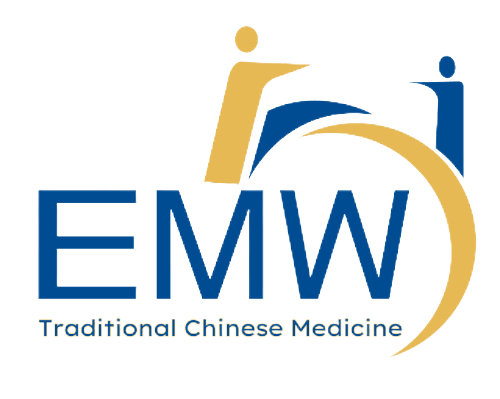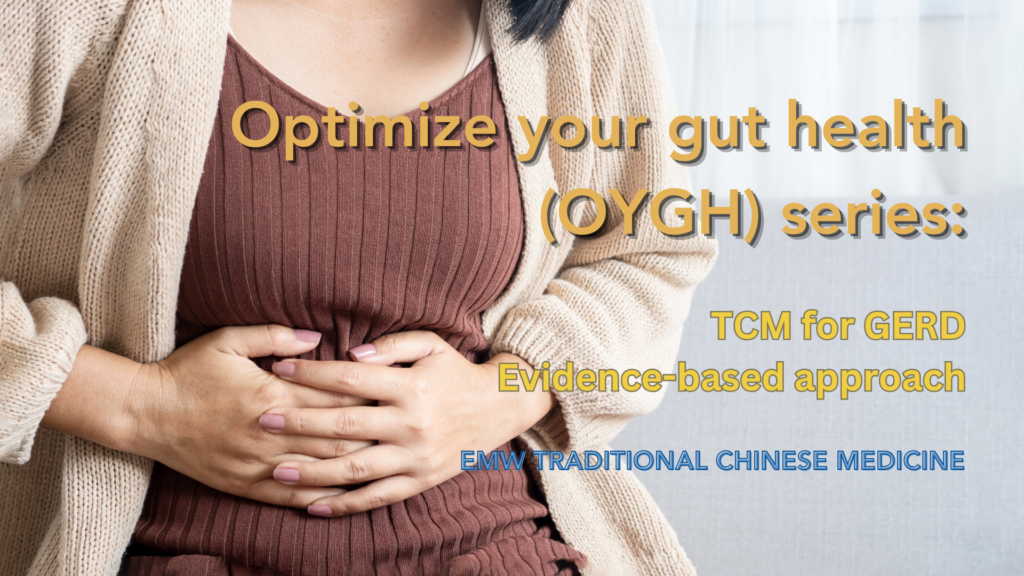Understanding GERD with TCM holistic approach
Gastroesophageal Reflux (GERD) is a digestive disorder which many young adults are facing today with increasing study or work stress, often accompanied with unhealthy dietary habits and lifestyles. This occurs when the acidic juice or food content in the stomach reflux back up through the loosening of the lower sphincter muscle into the esophagus.
Common discomfort GERD symptoms include:
- Bloating usually worsen after meals.
- Upper abdominal pain
- Sourish gastric acid reflux sensation at the throat (acid regurgitation).
- Burning sensation in the chest (heartburn).
- Frequent burps accompanied with bad breath.
- Constantly irritated throat sensation, having the urge to clear your throat frequently.
- Excessive phlegm stuck at your throat.
Many affected individuals are frustrated to experience these recurring discomforts in their daily lives which rob them the freedom of feeling well physically and mentally. The primary treatment involves reducing and blocking acid production with the aim to reduce irritation to the esophagus. Clinically, H2 receptor antagonists, proton pump inhibitors (PPI) and antacids are commonly used as part of convention medicine management. For a comprehensive and conclusive diagnosis, an esophagus endoscopy check is normally recommended for patients who exhibit chronic gastric reflux symptoms for 8 weeks even with PPI treatment [1].
The untold facts about PPI treatment
The recommended use for PPI treatment against GERD discomfort should be between 4 – 8 weeks. However, most patients have unknowingly used it for prolonged periods to control GERD symptoms. In recent clinical studies, the findings of patients who have been on PPI treatment for years or even decades have been shown to have an adverse reduction in gastric acid, leading to vitamins and minerals deficiency such as vitamin B12, magnesium, chromium, calcium, iron and zinc. It is also associated with an increased risk of kidney disease, dementia, SIBO (small intestine bacteria overgrowth) and a constant inflamed leaky gut [3].
Managing GERD with TCM
In TCM, we emphasize much on having good energy circulation and flow throughout the body. There is a saying that pain usually occurs when there is stagnation in Qi and/or Blood circulation which arise when specific organs do not carry out their roles effectively.
For GERD patients, therefore, they experience a disharmony and imbalance in the Liver, Spleen and Stomach Qi circulation. Liver regulates Qi circulation in the body while Spleen and Stomach are actively involved in the digestion process to transform food sources into nutrients for the body. In recurrent and chronic prolonged GERD cases, this results in a stagnated Liver Qi energy accompanied with an affected weak Spleen Qi energy which impairs its ability to transform and transport nutrients and defying Stomach Qi energy which disturbs its natural down bearing Qi ability. In short, the regular ascending-descending energy circulation becomes haywire, which explains the discomforts GERD patients experienced.
Managing GERD with TCM treatment by having regular acupuncture and customized herbs prescription, we aim to heal and restore your digestive system, for organs to work efficiently and effectively.
We also encourage individuals to have healthy diets and good lifestyle routines as it will impact our energy circulation and nutrients uptake directly. Similarly, a prolonged unhealthy diet and lifestyle habits will eventually take a toll on our energy circulation and prevent main digestive organs to function efficiently, causing gut-related discomforts to surface ultimately.
TCM Acupuncture on GERD
Acupuncture treatment has shown promising results to alleviate the discomfort symptoms caused by GERD such as heartburn and acid regurgitation, chest pain and bloated abdomen.
It is a potential alternative treatment when standard conventional medicine renders little curative effect on GERD. Studies have shown that acupuncture successfully strengthens the lower sphincter muscle (LES) [4], thereby increasing resistance to acid reflux and has an inhibitory effect on gastric acid secretion with enhanced gastric peristalsis to accelerate gastric emptying [5].
In the TCM context, acupuncture works mainly to rebalance energy flow mainly in the Liver, Spleen and Stomach, to remove stagnated energy and dispel dampness for these organs to work effectively and therefore to improve overall Qi and Blood circulation.

Common acupoints use clinically
1. Zu San Li (ST36): also known as the “point of longevity”
Location: Four finger width (index finger to last finger) below the kneecap, on the outer side of your shin bone.
Function: Descend Stomach Qi and to restore Spleen and Stomach function
Direction: Apply slight pressure using your thumb on this point and massage it in a circular motion for 10seconds, rest and relax for the next 5 seconds. Repeat this for 3-5 times.

2. Nei Guan (P6)
Function: To regulate Stomach descending Qi and alleviate nauseous sensation
Direction: Place your thumb on this point and apply slight pressure between the two tendons for 3-5seconds, rest and relax for the next 5 seconds. Repeat this for 3-5 times.

3. Zhong Wan (CV-12):
Function: To tonify the Stomach, dispel dampness and invigorate Spleen and improve Qi circulation in the middle energizer.
Directions: Use your palm and massage in a circular motion on CV-12 for 3-5mins or till the skin is slightly flushed.
Tips: Do remember to inhale and exhale slowly while you massage these points. Keep hydrated by having sips of warm water after the massage.

What is defined as having unhealthy diet and lifestyle habits?
Unhealthy dietary habits:
Selection of deep-fried, oily, greasy, spicy, raw, and/or cold food, caffeinated and carbonated drinks, an increased frequency of having these for 3-4 times/week. Diet plays a significant role in ensuring effective and efficient digestion function in individuals. Regular preference for these foods will impede digestion and aggravate acid reflux symptoms.
Sub-mental health state:
Feeling frustrated, depressed, and/or experiencing anxiety (mainly negative vibes) on most occasions or feeling emotionally stress from work, social environment and not having a healthy channel to let out these emotions via exercise, counseling etc. will cause stagnation to energy circulation and in turn prevent smooth Qi and Blood circulation flow in the body.
Poor sleep quality and quantity:
Consistently having insufficient sleep quality and quantity and sleeping late after 12am prevent the body and mind to enter a good rest and recovery state.
Your homework/takeaway:
Remember your 3 Rs.
- Eat at regular timing, preferably within the advised timeframe: Breakfast from 7am-9am, Lunch from 11:30am-1:30pm, Dinner from 5:30pm-7:30pm.
- Eat a regular portion of food – for your main meals (especially for your lunch and dinner), it is good to stick with a quarter, quarter, half rule – ¼ plate whole grains, ¼ plate proteins, ½ vegetables and fruits.
- Always be regular with your food selection – your choice matters. Always go for fresh ingredients, reduce intake on a sugary diet, desserts, oily, greasy, spicy food, and processed food items.
Diet modification – You are what you eat.
- If you are a coffee lover and you must have your coffee fix in the morning, please do not have it on an empty stomach – do consider having it together with a wholegrain toast or oatmeal.
- Reduce caffeinated beverages, cow’s milk, and dairy products (cheese, yoghurt, butter, and cream).
- Select gluten-free ingredients: wholegrain, multigrain, brown rice instead of refined white rice.
- Select anti-inflammatory food which is richly packed with natural antioxidants and high in polyphenols. E.g., Green leafy vegetables, a Mediterranean diet which largely includes fruits, vegetables, nuts, whole grains, fish, and healthy oils.
- Be aware of your trigger-food diets. It will be good if you are able to do a food map, to identify food sources which will cause the trigger.
Breathe right – Be conscious on how you breathe.
Slow down your breathing pace and regulate it by inhaling and exhaling slowly and gradually. Explore diaphragmatic breathing (also known as abdominal breathing) and consider doing it mindfully by relaxing your neck and shoulder, closing your mouth and inhale through your nose, to feel for an inflated abdomen when it is done correctly. This encourages optimal oxygen exchange, which enables your cells to receive more oxygen and to achieve a calm and relax state. If possible, do this exercise every night before you turn in to sleep.
Explore the use of essential oils.
The usage of essential oils has been integrated as part of natural holistic homoeopathy remedies in recent years [6]. Though more thorough research and studies are required, evidence suggests that the active chemical properties present in these oils do help to alleviate symptoms such as heartburn, nausea and vomiting.
Essential oils for consideration include: | To diffuse using a water-based diffuser: | For abdominal massage oil: |
Patchouli | For calming nausea: 4 drops of sweet orange 2 drops of lavender 2 drops of peppermint 1drop of either ginger or patchouli | Select your choice of carrier oil: In a 30ml (1oz) roller bottle: 2 drops of sweet orange/roman chamomile 2 drops of lavender 1 drop of ginger or patchouli |
If you are new to essential oils, please seek professional advice before using them. As pure essential oils are highly potent, it is advisable to dilute pure oils with carrier oils before application. Do use with caution and consult your doctors/physicians if your symptoms continue to persist after dietary and lifestyle modification.

Our TCM Physicians
References:
- Andrew Young, DO, Mythri Anil Kumar, MD and Prashanthi N. Thota, MD, FACG.
GERD: A practical approach. Cleveland Clinic Journal of Medicine. 2020 Apr;87(4):
223-230. - Ates F & Vaezi MF. (2014). New approach to management of PPI in treating refractory gastroesophageal reflux disease. Current Treatment Options Gastroenterology. SpringerLink12(1): 18-33.
- Avinash K. Nehra, MD; Jeffrey A. Alexander, MD; Conor G. Loftus, MD; and Vandana Nehra, MD. Proton Pump Inhibitors: Review of Emerging Concerns. Mayo Clinic Proceedings volume 93, issue 2, P240-246.
- Lin H, Sun J, Yuan YZ & Tang YM. (2014). Effects of acupuncture on esophageal motility of patients with refractory gastroesophageal reflux disease. Chinese Journal of Digestion. Year 2014, Issue 10, Page 662-665
- Hui Li, Tian He, Qian Xu, Zhe Li, Yan Liu, Fang Li, Bo-Feng Yang, and Cun-Zhi Liu. Acupuncture and regulation of gastrointestinal function. World Journal of Gastroenterology. 2015 Jul 21; 21(27): 8304–8313.
- Babar Ali, Naser Ali Al-Wabel, Saiba Shams, Aftab Ahamad, Shah Alam Khan, Firoz Anwar. Essential oils used in aromatherapy: A systemic review. Asian Pacific Journal of Tropical Biomedicine. Volume 5, Issue 8, August 2015, Pages 601-611






